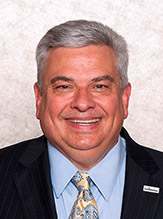 Stewards of resources must root out, repel unhealthy practices
Stewards of resources must root out, repel unhealthy practices
By Rick Dana Barlow
Even an industry called healthcare that concentrates on healthcare can possess unhealthy practices – be they costly, inefficient or wasteful or an amalgamation of all three.
Experts within the healthcare supply chain industry and profession, the Bellwether Community in particular, acknowledge that unhealthy practices, ranging from sacred cows to popular fads to passing trends, can be dangerous for people and organizations that provide services to patients. And that ultimately can be dangerous for patients who receive the care and services delivered.
Examples of unhealthy practices languish and linger all over the board.

Tom Lubotsky
For Tom Lubotsky, Senior Vice President, Supply Chain, Allina Health, Bronze Sustaining Sponsor, pricing is a problem.
“The lack of price transparency among our healthcare consumers is certainly being challenged more and rightfully so,” Lubotsky told Leaders & Luminaries. “Our industry is perhaps the only industry that consumers cannot shop fully for the best value. Cascading this culture of practice further is found as well among our suppliers and the providers who purchase their goods.”
Pricing opaqueness can complicate clinician relationships, specifically with physicians, according to Lubotsky.
“One of the most languishing practices are supplier rebates as a means to protect their net pricing in the marketplace,” he continued. “Some of these rebate programs can become very complex and only add transactional costs to both providers and suppliers to administer. The real buyers of many of these expensive goods are physicians who want to be better economic stewards. Yet their desire to choose a product by understanding the true net price is clouded by the amount of rebates associated with a specific product, a group of products or even supplier market share growth. Hence, supply chain departments must revert to visual cues or seek costly technology solutions that can translate the price of goods so physicians can be engaged in product choice appropriately.”
Price continues to be a stickler, despite continual attempts to defang it, delegitimize it or distract from it with talk of cost or value.
“Many supply chain programs still seem focused on price over cost or value,” insisted Mary Starr, Bellwether Class of 2019, Vice President, Member Services, Greenhealth Exchange. “My opinion on why that still happens is because the components to identifying the cost or value of products are so much more complex and varied, so the most direct measurement becomes price. I think there are just too many components to product use to focus on price as the main measure of value.”

Tim Bugg
Tim Bugg, President and CEO, Capstone Health Alliance, Silver Sustaining Sponsor, pulls back the camera to focus in on contracting and business relationships between all players.
“Traditional contracting will always be necessary in supply chain,” Bugg noted. “We must ensure we deliver the best-priced product to drive the best outcome. But the buck can’t stop there. Taking one or two percentage points from a contract over three-year contract terms is an unstainable approach to truly drive down healthcare cost. We have to break the paradigms and adversarial relationships with suppliers. Look to partnerships and increase the risk and/or outcome-based contracts and relationships.
“Physician and clinical champions are no longer a ‘like to have,’ but now are a ‘must have’ to becoming a top performing supply chain,” he added. “For those of us who have been in supply chain for 25 years have seen things come and go, and I don’t want to languish on the past. Thus, what I would suggest, is the day has come for leaders to look to break the mold, change the conversation, change the game, move the paradigm and become the influencer of change in supply chain.”

Shaun Clinton
Focus on the fundamentals and the foundational, urges Shaun Clinton, Senior Vice President, Supply Chain, Texas Health Resources, Bronze Sustaining Sponsor.
“The most dangerous practice I’ve seen is simply not being faithful to the core tenets of a good supply chain,” Clinton said. “If one simply pays attention to the things that make a supply chain successful, most everything else will take care of itself. While there is little doubt that supply chain plays a role in the delivery of care – one must not be distracted by the many different ways that have arisen to insert supply chain into the care team. We should view ourselves as stewards of the resources and manage the processes that will get those resources in the right place efficiently and economically.”

Ed Hisscock
Some questionable practices have been imprinted as habitual and remain active to some degree, observes Ed Hisscock, Past Board Member, Bellwether League Inc., Senior Vice President, Supply Chain, Trinity Health.
Hisscock homes in on several key dubious practices, “the industry norm that many of the implanted products come straight from the salespersons trunk into the OR and Cath Lab. And the fact that we are not yet transacting with GTINs [data standards], clear patient safety issues that other industries solved for years ago,” he added.

George Hersch
But Supply Chain can strive to do too much on its own and overstep its reach, cautions George Hersch, Bellwether Class of 2019.
“The lack of collaboration with other disciplines in hospital systems has held back supply chain efforts,” Hersch indicated. “This often happens under the belief that supply chain operations need to have exclusive control over everything named supply chain. Opportunities include seeking partners like Performance Excellence to review the process of service vendors and apply metrics that hold both them and the hospital available for optimal service and cost reduction. For example, a courier service costing a million dollars could reduce costs if routes were consolidated or hospitals used less emergent deliveries. Supply Chain and Performance Improvement working hand-in-hand with the vendor can help identify inefficiencies and improve processes that lower costs.”

Jim Francis
Jim Francis, Bellwether Class of 2017, Chair, Supply Chain Management, Mayo Clinic, Bronze Sustaining Sponsor, points to several examples that involve data.
“One example is the ever-elusive master data management and governance processes,” Francis said. “The goal of having a clean, accurate and sustainable master data file and governance process is essential to having an accurate and complete accounting of products and information for purposes of managing your supply chain. This is critically important if the data feed is integrated with multiple systems, such as your ERP, auto replenishment systems and EMR, etc. Many healthcare supply chains have not mastered this capability and have multiple work arounds, waste and incorrect data that potentially impacts revenue and expense.”

Dee Donatelli
Dee Donatelli, Bellwether Class of 2015, Vice President, Professional Services, symplr, expresses grave concern over the looming changing of the guard.
“The aging out of current supply chain leadership is dangerous,” she warned. “The industry is seeing a strategic slow down as a result of many, some report over 50%, of our senior supply chain leaders planning retirement in the next five years. Unfortunately, with the short-term plan of retirement, some organizations go in to ‘operations as usual’ mode and do not strategically continue to advance.”

Carl Meyer
For Carl Meyer, Bellwether Class of 2019, Vice President, The Wetrich Group, needlessly doing too much results in busywork and impeded progress.
“Healthcare is on an unsustainable path and unneeded costs need to be proactively pruned,” he said. “Within too many providers, particularly the not-for-profit facilities, there continues this long-standing trend of analysis paralysis. The concept that all parties need to have a say on all products or services is literally costing providers millions of wasted dollars annually. When a provider is a GPO member and that GPO has awarded a sole-source contract for a commoditized product, which along with its competitors product, have been used interchangeably for over 20 years, why in the world are providers wasting time with a value analysis process to bring back in a product that they used just three years earlier? This drives suppliers nuts as they have put forth real product savings, yet what a for-profit system will convert to in 60-90 days, the not-for-profit systems take between six and 19 months. Yet these same systems state that they need lower costs, while not converting promptly to harvest the savings that are on the table.”
Essentially, value analysis should concentrate on “meaningful” product decisions rather than conversions for the sake of the image of control.
“In early 2020, I spent an entire day to participate for 45 minutes in a dog-and-pony show for a commodity product that has been in the market for 35 years,” Meyer recalled. “The system spend was about $40,000 a year, and they had 16 people as a part of this evaluation. They brought in five suppliers, even though their GPO had only three on contract. Each session was followed by a 15-minute summary without the supplier in attendance, and these took place over several days.
“Over 2/3 of the people had to travel to the main facility, so do the math,” Meyer calculated. “Six hours of demos, plus an hour of meeting to determine who they selected, plus two hours average travel time for the 10 who traveled (16 x 7 =112 to 20 = 132 x $32 (($25 an hour + benefits +$32) = $4,224). This equates to 10.5% of the cost of the product! And oh, by the way, their GPO was about to award a new contract in the next 60 days, so they will likely do this again!
“Not-for-profits self-inflict unneeded cost in many areas and those who will survive the next 10 years, will need to eliminate this type of behavior,” he added.